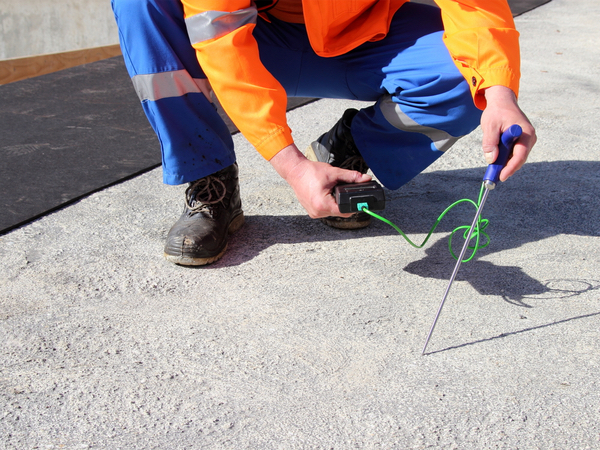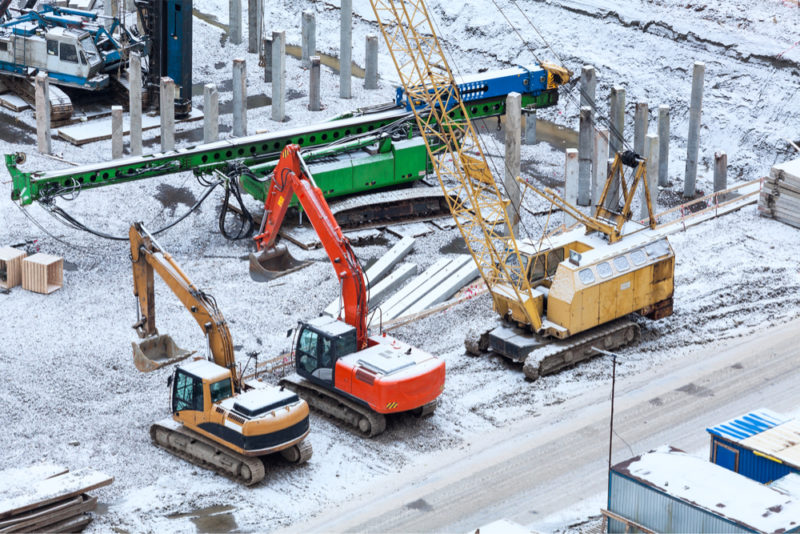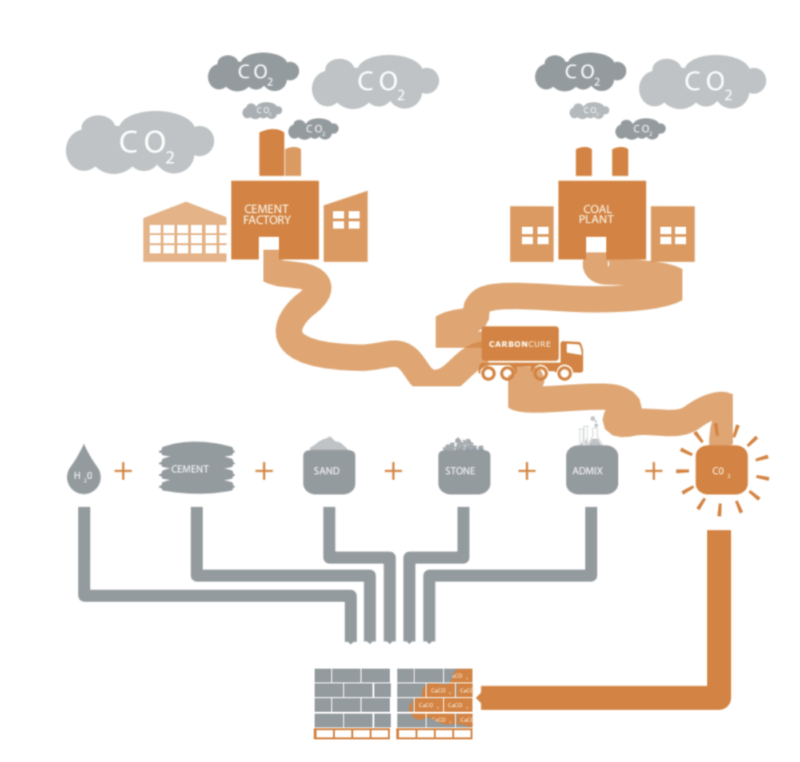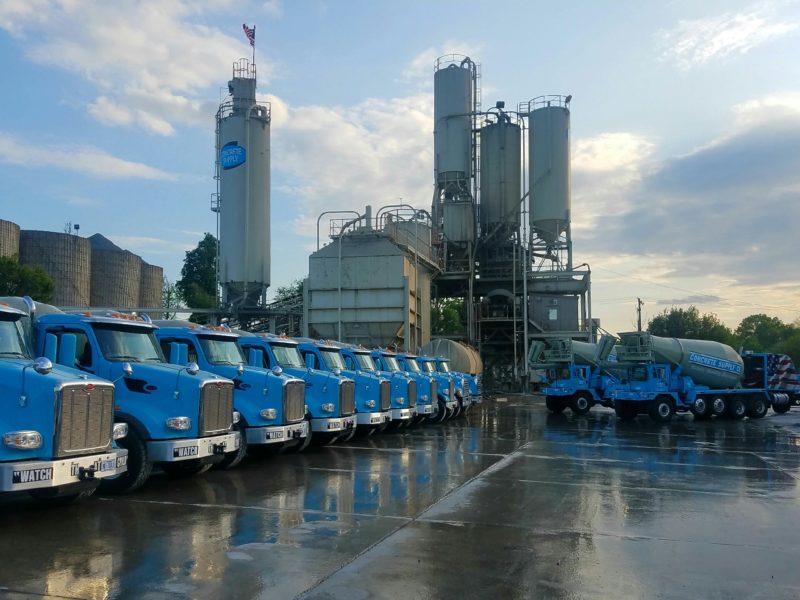Cold Weather Concreting 101
Cold Weather Concreting Is Possible When Certain Precautions Are Taken
Construction doesn’t stop–it’s a year-round industry. This means concrete mixes, pours and placements are needed all year and cannot come to a halt due to less-than-ideal weather conditions.
While concrete can be mixed and poured during the cold weather, there are many things to keep in mind which we plan to detail throughout this blog.
- First, we’ll explain what can go wrong while pouring concrete in cold weather conditions.
- Then, we’ll discuss how your ready mix provider can help you overcome the problems associated with cold weather concreting.
- Finally, we’ll warn you of the mistakes we frequently see when it comes to cold weather concrete pouring and tips to avoid making those mistakes.
Before we start, we feel it’s important to all get on the same page as to what exactly “cold weather” is considered.
The ACI or American Concrete Institute says in their ACI 306R-10 “Guide to Cold Weather Concreting that “cold weather exists when the air temperature has fallen to, or is expected to fall below 40℉ during the protection period*.” So if you find yourself grabbing a jacket on your way out the door, consider the air temperature before mixing, pouring, or placing concrete.
*The “protection period” is defined as the time required to prevent concrete from being affected by exposure to cold weather.
The Two Biggest Problems Cold Weather Concreting Creates
Now, there are two big problems you’ll face when pouring concrete in cold weather.
Problem #1
Concrete must be protected from freezing at an early age. If concrete freezes prior to reaching an initial strength of 500 psi it will not achieve its intended strength.
A general rule to keep in mind is that once the concrete has gained a strength of about 500 psi, it can withstand the effects of one freezing-and-thawing cycle. Exterior concrete should be air entrained and at the minimum required strength prior to exposure to multiple freezing-and-thawing cycles.
Problem #2
Concrete sets more slowly when it is cold but especially slow when temps are below 40℉. Below 40℉ the hydration reaction basically stops and the concrete will gain strength at a very slow rate.
To help your concrete reach that 500 psi strength ASAP, your ready-mix provider can add to (or change-up) the mix in ways that will get it to set more quickly. Those mix add-ins and changes are explained further below.
Mix adjustments alone can only do so much and its possible additional precautions are required to provide temporary heat prior to, during and after a concrete placement to aid in maintaining the concrete temperature once in place.
Mix Changes Your Ready-Mix Supplier Can Make To Help Your Cold Weather Concrete
Many of the problems experienced with cold weather concrete pouring can be overcome with an experienced ready-mix producer’s assistance. A concrete mix can be manipulated in ways that allow it to set and strengthen quickly.
- Hot water – As temperatures get colder most producers can start using hot water in the mixing process when requested to meet a minimum placement temperature.
- Slump – The slump required from any ready-mix is dependent on a variety of things. A slump that is less than 4 inches can reduce bleeding. Since the concrete sets slowly in the cold, bleeding starts later, lasts longer, and you’ll see more bleed water.
- Accelerators – Accelerators keep setting on a somewhat predictable schedule. Often times you’ll see the use of calcium chloride to speed up the hydration reaction. But consider this–calcium chloride can lead to corrosion of any steel embedded in the concrete and it can lead to a streaked and spotted surface appearance with colored concretes.
- Non-chloride accelerators – Non-chloride accelerators are readily available and must be used any time there are embedded metals such as reinforcing steel. Non-chloride accelerators are also appealing because they don’t discolor concrete.
*Please note that accelerators should not be considered antifreeze agents. They work to increase the rate of the hydration reaction–not prevent freezing.
- Fly ash – Fly ash or slag cement may cause the mix to set slower and generate less heat compared to a straight cement mix. Your ready-mix producer will have straight cement options available upon request.
- More internal heat – To make the reaction hotter, mixes with higher cement contents can be requested. You may consider ordering a concrete that is one or two classes higher in strength. The use of Type III cement may also be an option based on availability which is typically limited to larger metropolitan areas. Your mix’s internal heat can be used to your advantage, and you’ll see why a little later on in this article.
A quality concrete mix design is crucial for success in construction. At Concrete Supply Co. we believe in our ready-mix designs and their ability to help you achieve a successful cold weather concrete placement.
Avoid These Common Mistakes with Cold Weather Concreting
1. Placing concrete on a frozen ground
Concrete should not be placed on ground that is frozen or covered with ice or snow as it will have an immediate and long-term impact on the performance of the concrete. A frozen or cold subgrade will slow the set by lowering the in place concrete temperature reducing the effect of the hot water and/or accelerating admixtures when used. Frozen ground may also settle once thawed leading to potential settlement cracks.
2. Allowing concrete to freeze
Think about it this way, water takes up more space in its ice phase than it does in its liquid phase. So when the water used in your mix freezes, it expands, causing damage to the concrete. Do what you can to ensure your pour sets fast enough to prevent freezing. Additional precautions to prevent the in place concrete from freezing may be needed during the protection period.
3. Not taking advantage of heating techniques (or using them incorrectly)
Many times, heating techniques are used to prevent concrete from freezing (mistake #2). When it comes to flatwork, the best way to protect concrete from the cold is to cover it with blankets after it’s been finished. This is where you should take advantage of the heat concrete generates on its own. Blankets will keep your concrete warm even if the temperature goes below 20℉. Use layers of blankets at corners and edges that could freeze.
If blankets aren’t enough, try laying heating blankets on top of the slab or using hydronic heating pipes to keep the slab from freezing.
Still not enough? Enclose and heat the air with a temporary enclosure. While this option comes with its own problems and can run a pretty penny, it is sometimes your only option if the concrete pour has to happen. Be especially careful when using fuel-fired heaters. If your enclosure isn’t properly ventilated, carbon dioxide can build up and react with the concrete, causing the surface to become weak and dusty.
These same blankets used to protect the in place concrete after the placement can also be used to prevent the subgrade from freezing the day or night before the placement providing a warmer subgrade leading to faster set times.
4. Using cold materials
Not only is it important to ensure your mix, the ground, and the air are warm enough, the materials (forms, embedments, and tools) you use for cold weather concrete pouring should also be above freezing and close to the delivered concrete temperature if possible.
At Concrete Supply Co., we have experience with all types of ready-mixes, even mixes that will stand up to freezing conditions. If you need to pour concrete this winter, download our Get The Best Mix For Your Project Concrete Checklist, and be sure to specify that you’ll be looking to pour your mix during cold temperatures.
And remember, concrete can be poured during cold weather and develop sufficient strength and durability to satisfy requirements when the proper precautions are taken. A mix that is properly proportioned, produced, placed, and protected will survive the cold weather.






